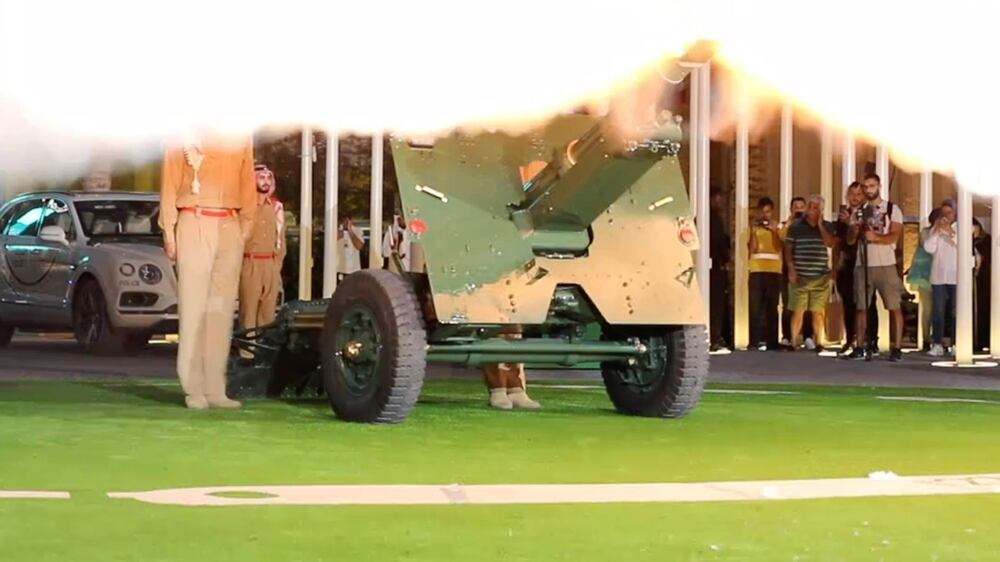As the first week of Ramadan begins, life slows down across the UAE and the region.
It’s a month to observe fasting, where one creates a space for reflection and engages in acts of charity. It’s also a time when families and communities gather to spend time together and share meals.
One tradition that bonds people during Ramadan is the firing of cannon, heard once a day as the sun sets and mosques start the call for prayer. It's a signal for those observing fast that they can now have iftar.
The photo above shows an Emirati policeman firing a cannon in Sharjah during Ramadan, on December 30, 1997.
The iftar cannon is known as madfa al iftar, which literally translates to the cannon for breaking fast.
The exact origins of this tradition are not clear. There are many conflicting accounts on how or when it started, but one of the common stories recounts that it began in Cairo, Egypt, during the 15th-century Mamluk dynasty.
The sultan at the time was in the process of testing a cannon that was given to him and fired it at sunset during Ramadan. Many residents of the city thought it was intentional, marking the end of fasting for the day. Seeing the positive public response, the sultan ordered for the cannon to be fired every day.
Dubai's Ramadan cannon fired twice to announce start of holy month

Other accounts also trace the story to Egypt, but during the 19th century. A cannon was fired by Muhammad Ali, the ruler of Egypt in the early 19th century at sunset during Ramadan, apparently by coincidence. Another story recounts soldiers testing a cannon at sunset in Ramadan at the time of the ruler Khedive Ismail of Egypt in late-19th century.
In all stories it seems the firing of the cannon began as an accident but then progressed to become a Ramadan fixture. No matter its origins, firing cannon to mark the end of fasting spread across the region.

It makes practical sense, a loud cannon being used to inform the public when to break their fast before clocks were common place and watches or modern timekeeping technology were used.
The UAE started the tradition in the 1960s before speaker systems were in place in mosques. And while today, those observing a fast can easily be informed of iftar time through the sound of the adhan from neighbourhood mosques or through the TV, many still listen out for the firing of the cannon during the holy month.
In Dubai, the responsibility and process of the firing of the cannon during Ramadan is managed by Dubai Police. It is fired twice to signal the start of Ramadan and then once every day to announce iftar. To signal the end of Ramadan and Eid Al Fitr, the cannon are fired twice in a row and then twice again on Eid morning.
According to protocol four police officers must be present at each firing.
And while the UAE is hailed for its forward-thinking and innovative vision, at a time where technology has made our lives much easier to plan, there is something enduring about this traditional method.
For those who observe fasting and those who don't, the firing of the cannon during Ramadan is a reminder of the importance of community and how traditions can still exist in a modern world.







